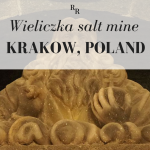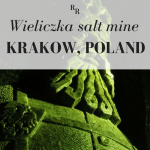Wieliczka Krakow salt mine isn’t just a salt mine!
You wouldn’t think that touring a salt mine would be particularly interesting. I pictured tunnels carved into solid salt, and that was about it.
It turns out that the Wieliczka salt mine outside Krakow, Poland, is much more than tunnels carved into salt. It has a history all its own, and, surprisingly, it has artworks made of salt!
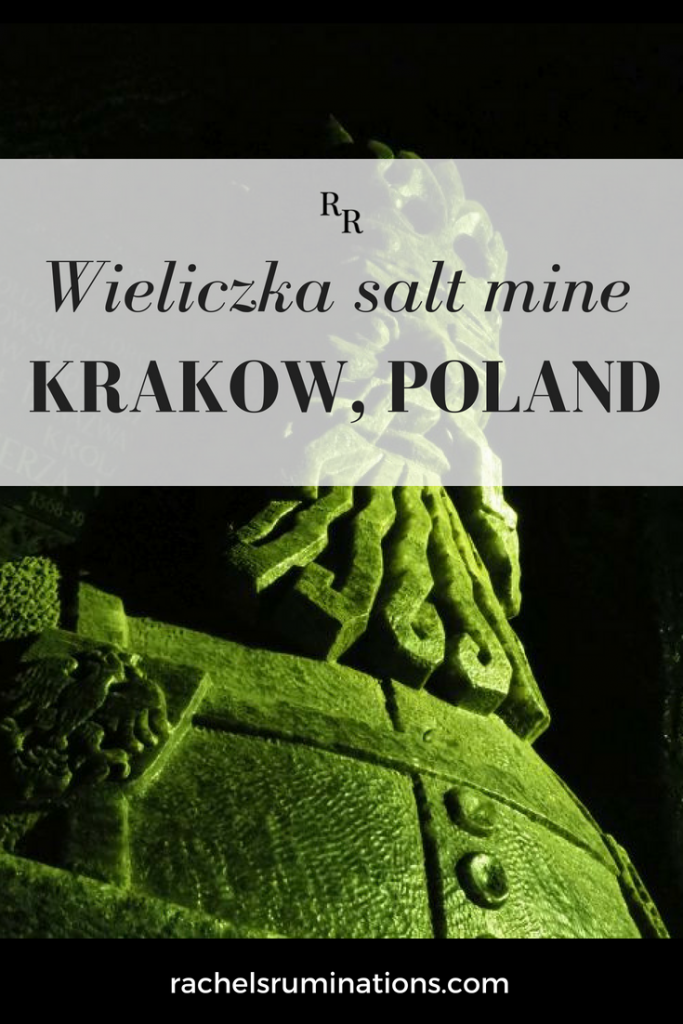
Disclosures: I received a tour of Wieliczka Krakow salt mine for free as a participant in an “influencer” conference. Nevertheless, all opinions are my own. This article also contains affiliate links. Making a purchase through an affiliate link will mean a small commission for this website. This will not affect your price.
History of Wieliczka salt mine
Salt was an extremely important commodity for Krakow starting from the 13th century, when rock salt was discovered there. Why was salt so important? Because people didn’t just use it to flavor food. In the days before refrigeration, salt was used to preserve food, so it could be stored for long periods of time. It was essential.
For that reason, the Wieliczka salt mine became the key to Krakow’s prosperity, and remained so for centuries.

The men (and horses) who worked in the mine, though, didn’t have easy lives. It was heavy and at times dangerous work. Men died in explosions. They worked incredibly hard in dank, dark conditions.
They were religious, and they prayed. So deep underground – the mine reaches 327 meters (1,073 feet) at its deepest and comprises 287 kilometers (178 miles) of passages – they couldn’t just pop up to the surface easily to go to church, so they began to carve figures, religious and otherwise, into the walls of the mine. They made themselves places to pray.
These carvings are what makes a visit to the mine so interesting. The images range from relatively simple, even primitive, to ornate masterpieces. Some are centuries old; some are modern. Many are religious: images of Jesus or various saints.
The most impressive part, though, is the underground Chapel of St. Kinga, essentially an entire cathedral carved out of the salt and adorned with carvings and statues.
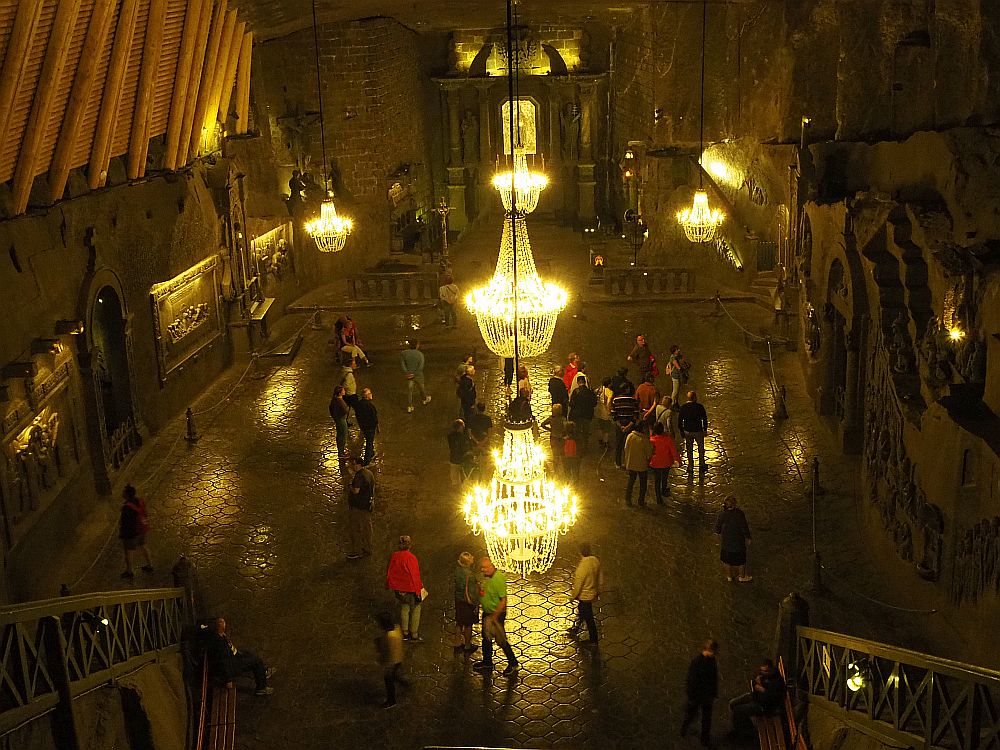
The detailed work even went so far as the floors, which are carved to look like ceramic tiles, and the chandeliers, made of pieces of salt that look just like crystals. It’s astonishing and, at times, magnificent. These anonymous men left a visual treasure underground.
Other articles about Krakow sights:
Wieliczka salt mine tours
Wieliczka salt mine offers a number of different tours of various degrees of difficulty. I took the basic tour as a guest of the mines. While most of the people in our group walked down the initial 350 or so steps, I joined a few others who had mobility problems (I’ve been experiencing knee problems.) in the elevator. While I assume the elevator has been approved for use by the public, it looks and acts like a mine elevator: the doors were closed on us from outside, we were plunged into darkness and the cage we were standing in descended far too quickly for comfort, shaking violently the whole time.
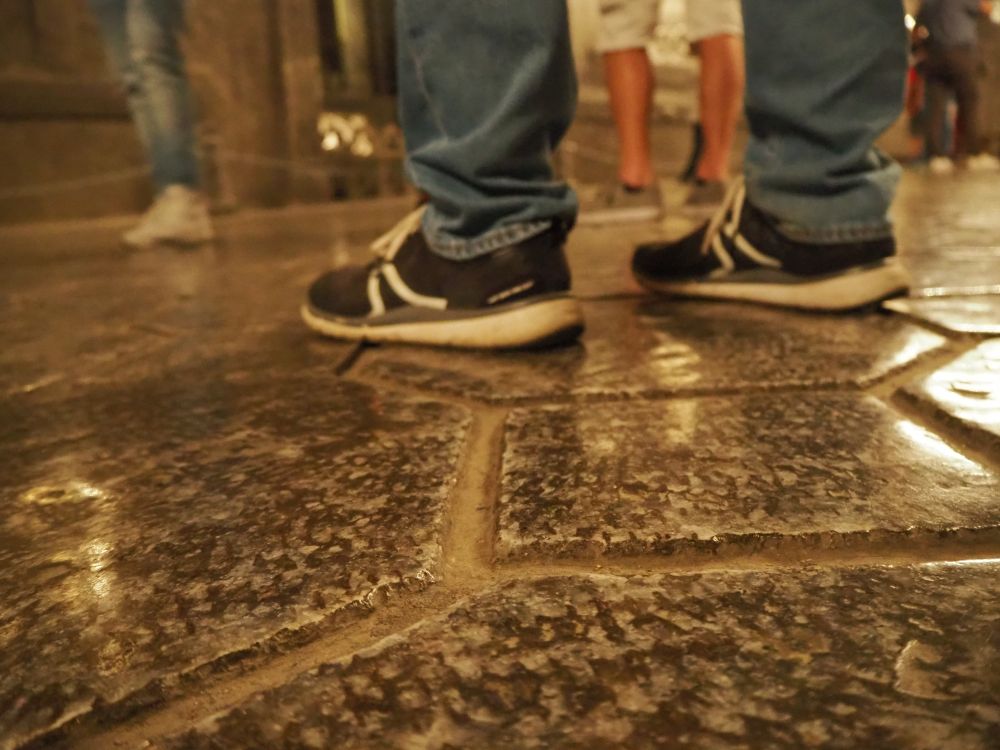
The tour itself involves quite a bit of level walking, interspersed with further descents down several flights of stairs, none of them terribly long. In total, the tour covers almost three kilometers (almost 2 miles) – only a very small percentage of the mine’s extent – and 800 steps, mostly down. Fortunately, the whole group could return to the surface by elevator.
Book your accommodations in Krakow here!
Our guide recounted the history of the mine as well as the stories of the various images we passed. Along the way we passed several displays showing how the work was done, such as a pulley system used to lift blocks of salt. She seemed concerned to keep the group together and, when a group of us slowed down to take some pictures, she chased us along quite harshly. Given the mine’s 287 kilometers of tunnels, I suppose she must feel the pressure not to lose any tourists!
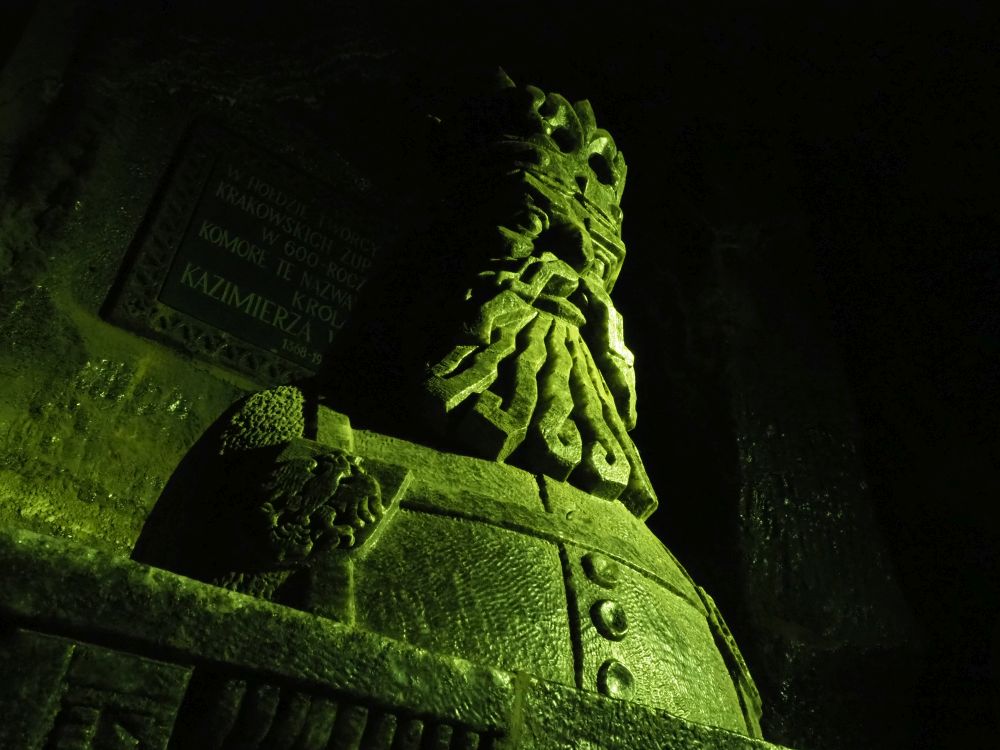
The tour ended, not surprisingly, in a gift shop and café deep in the earth. There, you can buy various objects made of salt, such as tea lights, or concoctions of flavored salt.
The mine operators also run a four-star hotel called the Grand Sal right near the mine. Or use the map below to find a hotel in Krakow rather than Wieliczka:
Visitor information
The Wieliczka salt mine is located about 10 km (6 mi) from central Krakow. You can either take bus 304 from Galeria Krakowska on u. Kurniki, or take a train from the airport or from Kraków Główny (the main railway station) to Wieliczka Rynek-Kopalnia.
Tours start at either the main Danilowicz shaft or the Regis shaft in the center of Wieliczka town. Two different tours of the mine are available:
- The Tourist Route is what I took and covers all the highlights, including the underground cathedral and a saline lake. It starts at the Danilowicz shaft. You do not need to reserve for this tour, but you should anyway if you don’t want to wait in line, especially if it’s the busy summer season.
- The Miners’ Route involves dressing like a miner and wearing a hardhat, then learning some of the basics of a miner’s job. It is more about mining and does not include the highlights of the mine. Regis shaft. Only 10 years old or over. Reserve ahead.
If you don’t fancy going underground, a large “graduation tower” stands next to the Danilowicz shaft entrance. Built specially for purpose of larch wood covered in bundles of blackthorn branches, the construction disperses the salt water running through it, creating damp, salty air. It is reputed to be good for respiratory problems of all sorts. It is open for visitors; no reservations required.
It’s chilly in the mine, even when it’s warm on the surface, so make sure to bring a jacket. And wear good walking shoes.
There’s also a “health resort” inside the mine, which promises a “pollution- and allergen-free atmosphere and a space for relaxation!” It seems to be aimed at people with various lung conditions like COPD, bronchitis or asthma, and offers various therapies for patients.
Acccessibility: According to the mine’s website, much of the Tourist Route is accessible to people in standard size wheelchairs, using the lift and some lifting platforms. Book in advance. The Miners’ Route is not wheelchair accessible, but you can use the Regis shaft lift to visit the Cracow Saltworks Museum inside the mine.
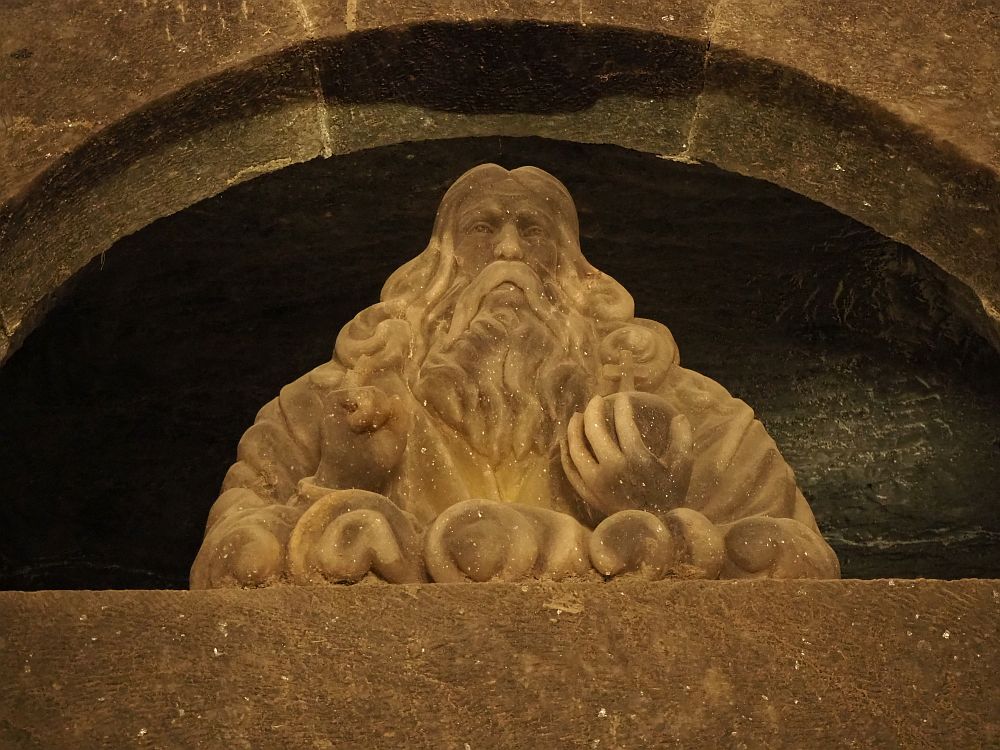
Wieliczka and Bochnia Salt Mines: a UNESCO World Heritage Site
Another mine nearby is also open for visitors: Bochnia Royal Salt Mines. Equally ancient, Bochnia combined with Wieliczka are a UNESCO World Heritage Site. This is based on the rock salt art as well as how they illustrate the development of salt mining from the Middle Ages to the 20th century, when both mines closed.
Book a group tour or private tour of the Bochnia mine, both of which include transportation from Krakow.
I have not visited Bochnia Royal Mine, so I can’t compare the quality of either the artwork or the tours. Bochnia is smaller. The air in Bochnia is reputed to be particularly pure, and you can even pay to stay overnight in the mine. Apparently the Bochnia mine includes a short ride on a raft over a flooded chamber as well as a train ride through some tunnels.
Have you visited this salt mine? Share your thoughts in the comments!
My travel recommendations
Planning travel
- Skyscanner is where I always start my flight searches.
- Booking.com is the company I use most for finding accommodations. If you prefer, Expedia offers more or less the same.
- Discover Cars offers an easy way to compare prices from all of the major car-rental companies in one place.
- Use Viator or GetYourGuide to find walking tours, day tours, airport pickups, city cards, tickets and whatever else you need at your destination.
- Bookmundi is great when you’re looking for a longer tour of a few days to a few weeks, private or with a group, pretty much anywhere in the world. Lots of different tour companies list their tours here, so you can comparison shop.
- GetTransfer is the place to book your airport-to-hotel transfers (and vice-versa). It’s so reassuring to have this all set up and paid for ahead of time, rather than having to make decisions after a long, tiring flight!
- Buy a GoCity Pass when you’re planning to do a lot of sightseeing on a city trip. It can save you a lot on admissions to museums and other attractions in big cities like New York and Amsterdam.
Other travel-related items
- It’s really awkward to have to rely on WIFI when you travel overseas. I’ve tried several e-sim cards, and GigSky’s e-sim was the one that was easiest to activate and use. You buy it through their app and activate it when you need it. Use the code RACHEL10 to get a 10% discount!
- Another option I just recently tried for the first time is a portable wifi modem by WifiCandy. It supports up to 8 devices and you just carry it along in your pocket or bag! If you’re traveling with a family or group, it might end up cheaper to use than an e-sim. Use the code RACHELSRUMINATIONS for a 10% discount.
- I’m a fan of SCOTTeVEST’s jackets and vests because when I wear one, I don’t have to carry a handbag. I feel like all my stuff is safer when I travel because it’s in inside pockets close to my body.
- I use ExpressVPN on my phone and laptop when I travel. It keeps me safe from hackers when I use public or hotel wifi.


